1971 Lamborghini Espada Navigation
The Espada was one of the first production models produced by the newly formed Lamborghini marque. The first was the 350 GT of 1964 to 1966, a grand tourer based on the earlier Lamborghini 350 GTV, both with coachwork by Carrozzeria Touring. At its heart was a 3.5 liter V12 engine that benefitted from the technical expertise of Giotto Bizarrini. An increase in displacement size in 1966 brought about the 400 GT (a.k.a. 400 GT Interim), followed by the 400 GT 2+2. Corresponding with the arrival of the 400 GT was the Miura, the first supercar with a rear mid-engine two-seat configuration. Its sleek design was courtesy of Marcello Gandini at Bertone, and its engineering prowess was the work of Gian Paolo Dallara, Paolo Stanzani, and Bob Wallace. 
Coupe
Chassis #: 7996Automobili Ferruccio Lamborghini S.p.A. was founded in 1963, its first production was available in 1964, and by 1966 it had introduced the world's first supercar which also claimed the title of the fastest production road car. Like the 350 GT, the 400 GT was in production for a brief period of time, ending in 1968 when it was succeeded by the Islero 2+2 coupe wearing a design penned by Mario Marazzi at Carrozzeria Marazzi. Two hundred and twenty-five examples were built over a two-year period before it was replaced by the Jarama 2+2 Grand Tourer in 1970.The Espada and Jarama
Coupe
Chassis #: 7996The Espada and the Jarama shared similar body lines as both were designed by Marcello Gandini at Bertone. The Espada arrived on the scene in 1968 and was followed by the Jarama in 1970.The Jarama was a 2-door 2+2 coupe resting on a 93.7-inch wheelbase, measured 176.6 inches in length, 71.7 inches wide, and stood 46.9 inches tall. Mounted at the front was a 3.9-liter V12 engine paired with either a five-speed manual or three-speed TorqueFlite automatic. The Espada received similar mechanical specifications as its Jarama sibling, but it had a larger footprint, with its wheelbase reaching 104.3 inches, an overall length of 186.2 inches, a width of 73.2 inches, and stood 46.7 inches tall. It had seating for four, more interior space, and offered more luxury and more comfortable accommodations for its occupants. 
Coupe
Chassis #: 7996A total of 328 examples of the Jaram were built before production ended in 1976. In comparison, a total of 1,227 examples of the Espada were built through 1978. The Espada held the company's title of being the longest-running and most produced Lamborghini model until it was 'dethroned' by the Countach.The 3,929cc (3.9 Liter) Lamborghini V12The Bizzarrini-designed 3.5 liter V12 engine fitted in the Lamborghini 350 GT had the potential of producing 400 horsepower at 11,000 RPM. It was essentially a race engine that was tamed for preservation, durability, and smoother operation. The racing-style dry sump oiling system used on the 350 GTV prototype was replaced with a conventional wet sump system on the 350 GT production model. The compression ratio was reduced from 11.0:1 to 9.4:1, fewer exotic materials were used, and the 36mm downdraft racing Weber carburetors were replaced by side-draft 40 DCOE Weber units. The latter also reduced engine height allowing a lower hood line. 
Coupe
Chassis #: 7996In production form, the 3.5-liter engine produced 270 horsepower. The 3.9 liter (3,929cc) engine powering the 400 GT produced 320 horsepower. The 3.9-liter unit in the Islero and Espada (initially) produced 325 horsepower (345 hp in the Miura). The 3.9-liter unit in the Espada Series II and the Jarama produced 350 hp due to a higher 10.7:1 compression ratio. The 3,929cc V12 had aluminum pistons, an aluminum alloy crankcase with cast-iron cylinder liners, two valves per cylinder (24 valves in total), an 82mm bore, 62mm stroke, 9.5:1 compression, wet sump lubrication, and six Weber 40DCOE side-draft carburetors. The Lamborghini-designed five-speed manual transmission had a hydraulically operated clutch and was mounted longitudinally, inline with the engine. The Lamborghini Espada 
Coupe
Chassis #: 7996The shape and design of the Espada were inspired by Marcello Gandini's earlier work, the Lamborghini Marzal and Bertone Pirana show cars. The Espada was in production from 1968 to 1978 in three series. It was created to meet customers' growing demands for a four-seater V12 Lamborghini with a spacious boot (trunk). It was a huge success for the infant company and even outsold the fabled Miura. The name 'Espada' means 'sword' in Spanish, referencing the sword used by the torero to kill the bull. In production for a decade, the first series (S1) was built from 1968 to 1970; the S2 from 1970 to 1972; and the S3 from 1972 to 1978. Each of these brought a myriad of updates to the mechanical specification and interior and exterior designs. Both Espada and Islero were introduced in 1968 at the Geneva Motor Show.
Coupe
Chassis #: 7996Specification
The Espada had a semi-monocoque unibody chassis formed from pressed sheet steel and square-section steel tubing. The fully independent suspension was based on the earlier 400 GT 2+2 design, with anti-roll bars, unequal-length double wishbones, coil springs, and hydraulic shock absorbers. Girling solid disc brakes with three-piston calipers (larger in the front) were placed at all four wheels. Steering was via a worm-and-peg type system built by ZF. The hood was constructed of aluminum. Rust issues would be problematic for the steel chassis and bodywork, noted by several period journalists.There were two fuel tanks that held a combined 25 (US) gallons of fuel. The two fuel fillers were discretely hidden behind black cosmetic grilles in both C-pillars. Lamborghini Espada Series 1
The Series 1 had a 325 horsepower, 3.9-liter engine, alloy wheels built by Campagnolo on knock-off hubs (the same used by the Miura), and the tail lights from the first series Fiat 124 Sport Coupe. The dashboard was similar to the Marzal concept car, with octagonal housings for the main instruments and an additional binnacle for the secondary gauges.
Coupe
Chassis #: 8394
Engine #: 40603
View info and historyA total of 186 Series 1 examples were built before January 1970. Lamborghini Espada Series 2The Espada Series II was introduced at the 1970 Brussels Motor Show, and 575 examples would be built before the Series III was launched in 1972. 
CoupeUpdates to the exterior were refined to the removal of the grille covering the vertical glass tail panel. Interior updates were more numerous, with changes to the center armrest, improved rear seat passenger ventilation, and an all-new dashboard, center console, and steering wheel. The instrument binnacle now had a rectangular shape with round gauges. The entire width of the dashboard was accented by a wood-trimmed fascia. With higher 10.7:1 compression, output rose by 25 bhp to 350 bhp. With improved performance, Lamborghini engineers replaced the solid discs with vented Girling discs. The rear half-shafts were removed in favor of CV joints. Power steering became optional during the Series II production. Like the Series I, the Series II rode on 205VR15 Pirelli Cinturato CN72 tires. A few of the late-production S2 Espadas received five-stud hubs instead of knock-off wheels.
CoupeLamborghini Espada Series 3The Espada Series III rode on five-stud hubs with wider Pirelli Cinturato 215/70WR15 CN12 tires. Power steering by ZF and air conditioning were now standard equipment, and a sunroof was offered as optional. A Chrysler TorqueFlite three-speed automatic transmission became optional in 1974, and fifty-five examples were so equipped.Styling updates to the exterior included a square mesh (replacing the hexagonal design) grille design, and tail lights from the Alfa Romeo 1750 Berlina. On the interior, the instrument panel was once again revised, this time with aluminum trim, and most of the controls were now within easy reach of the driver. 
Coupe
Chassis #: 8486
Engine #: 40655
View info and history
Auction entries : 1The engine continued to deliver 350 horsepower, and minor updates were made to the spring and shock absorbers. In 1975, near the close of production, larger impact bumpers were installed to comply with United States safety regulations. A secondary air injection pump and changes to the carburetors and ignition system were made to comply with US emissions requirements. When production ended, the Espada did not have a direct successor. Several decades later, Lamborghini attempted to revive the Espada with a four-seat Estoque concept car unveiled at the 2008 Paris Motor Show, but so far, it has remained a concept.
by Daniel Vaughan | Mar 2023
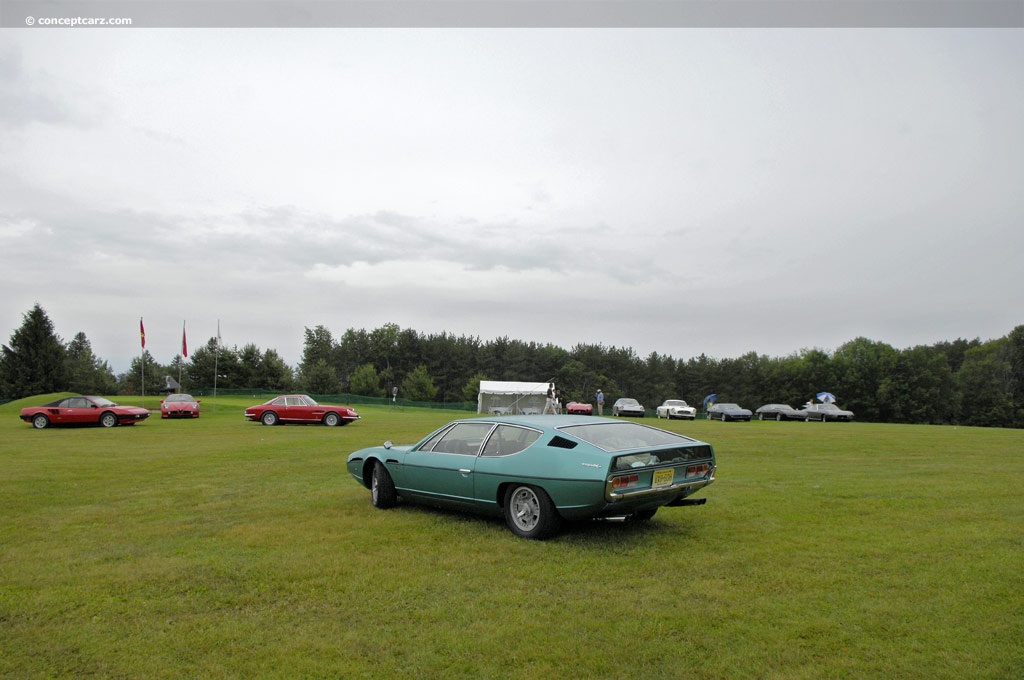
Coupe
Chassis #: 7996
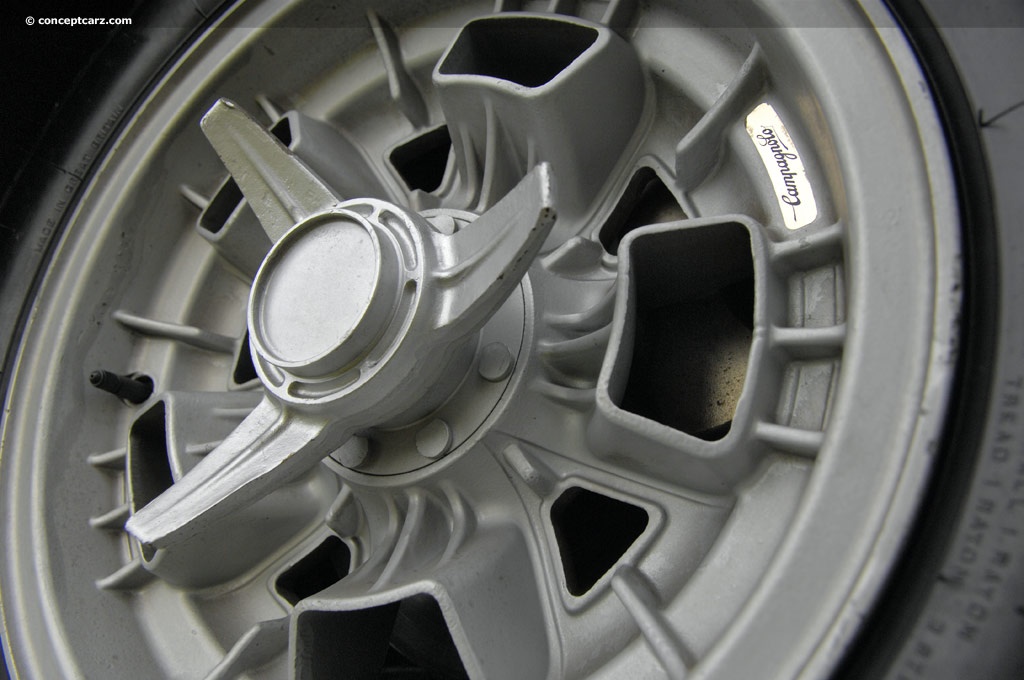
Coupe
Chassis #: 7996
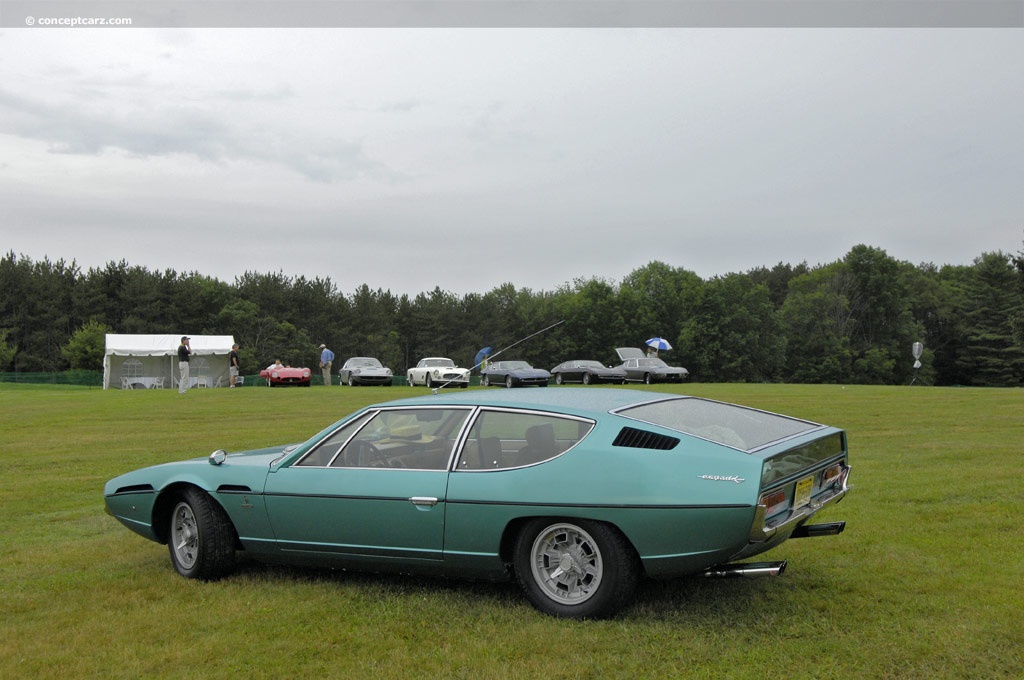
Coupe
Chassis #: 7996
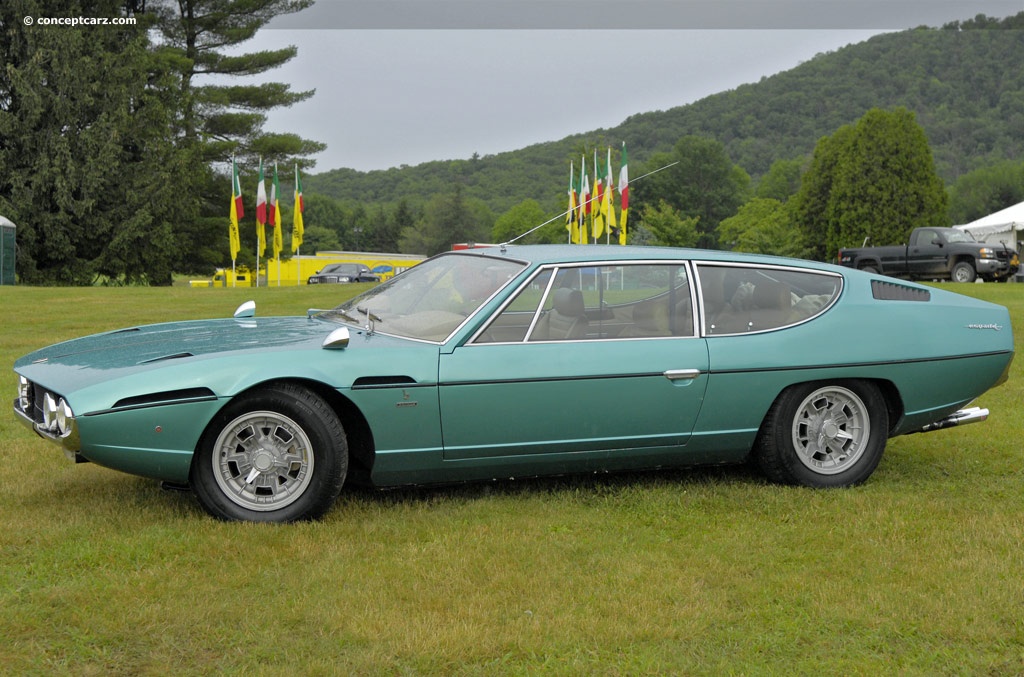
Coupe
Chassis #: 7996
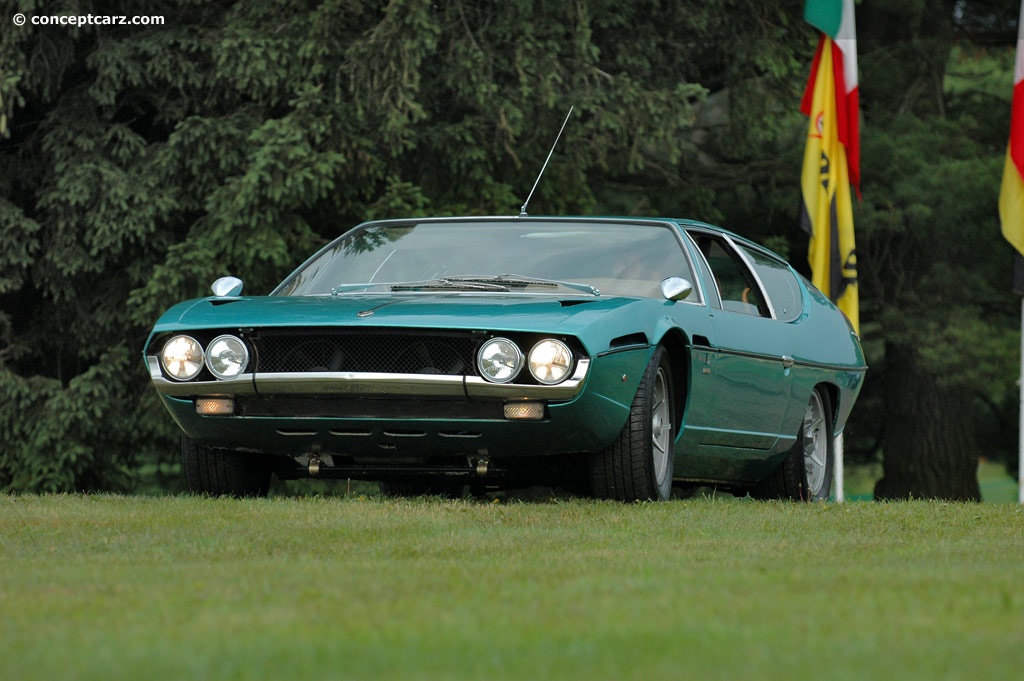
Coupe
Chassis #: 7996
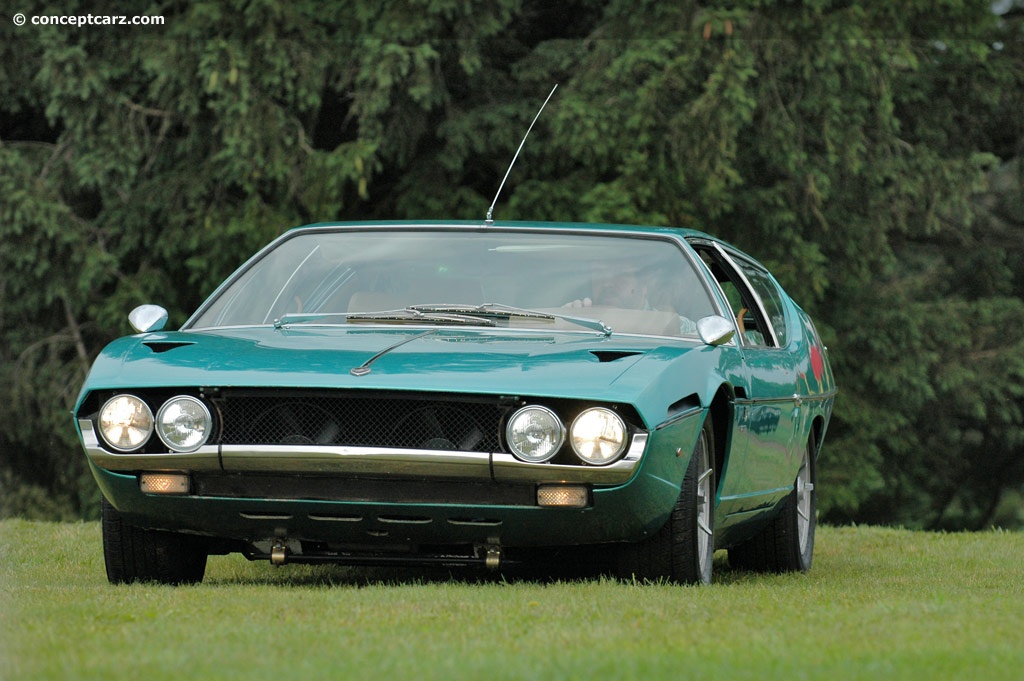
Coupe
Chassis #: 7996
The Espada had a semi-monocoque unibody chassis formed from pressed sheet steel and square-section steel tubing. The fully independent suspension was based on the earlier 400 GT 2+2 design, with anti-roll bars, unequal-length double wishbones, coil springs, and hydraulic shock absorbers. Girling solid disc brakes with three-piston calipers (larger in the front) were placed at all four wheels. Steering was via a worm-and-peg type system built by ZF. The hood was constructed of aluminum. Rust issues would be problematic for the steel chassis and bodywork, noted by several period journalists.There were two fuel tanks that held a combined 25 (US) gallons of fuel. The two fuel fillers were discretely hidden behind black cosmetic grilles in both C-pillars. Lamborghini Espada Series 1
The Series 1 had a 325 horsepower, 3.9-liter engine, alloy wheels built by Campagnolo on knock-off hubs (the same used by the Miura), and the tail lights from the first series Fiat 124 Sport Coupe. The dashboard was similar to the Marzal concept car, with octagonal housings for the main instruments and an additional binnacle for the secondary gauges.
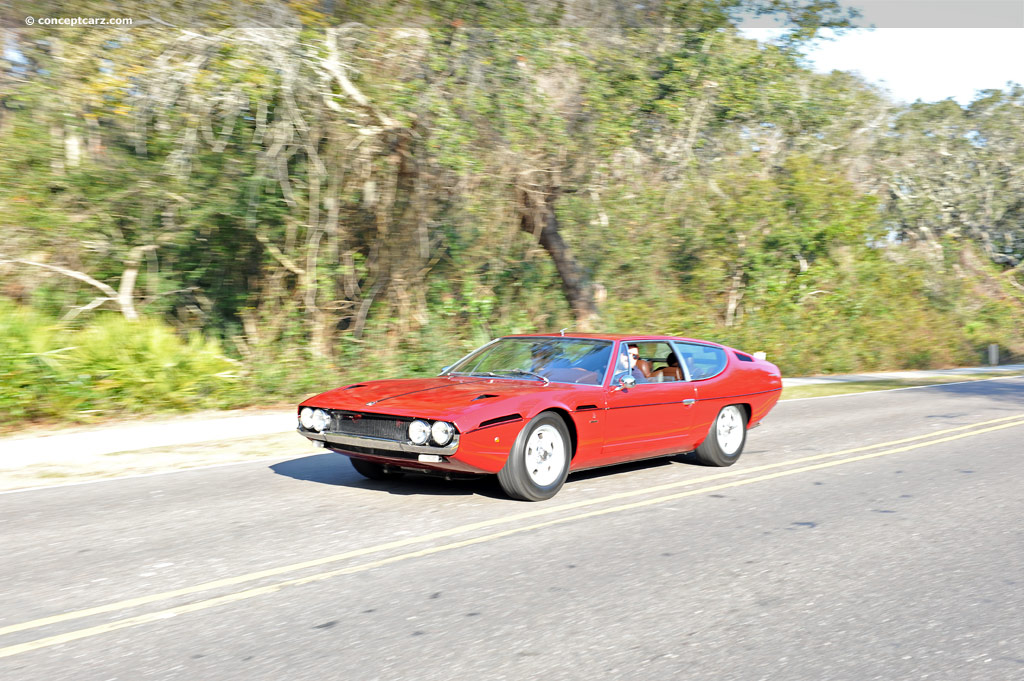
Coupe
Chassis #: 8394
Engine #: 40603
View info and history
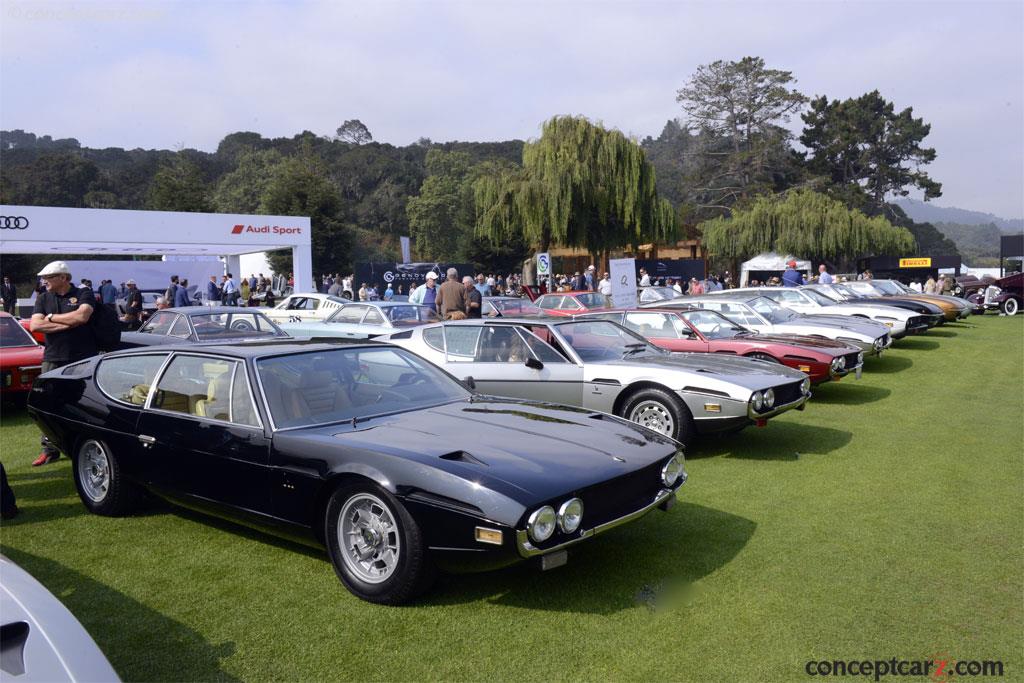
Coupe

Coupe
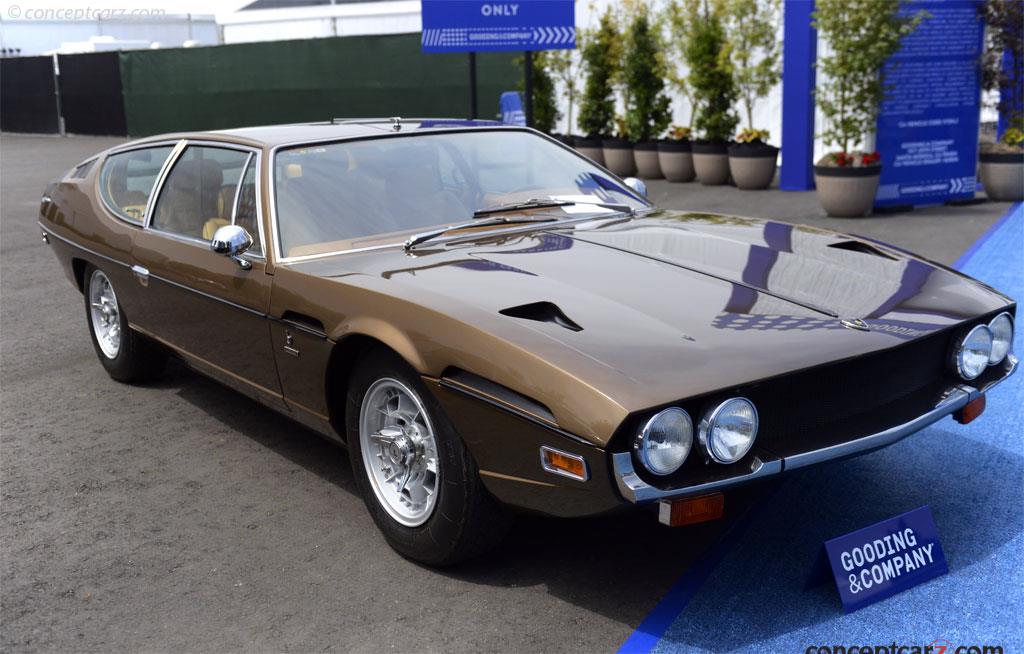
Coupe
Chassis #: 8486
Engine #: 40655
View info and history
Auction entries : 1
by Daniel Vaughan | Mar 2023
Related Reading : Lamborghini Espada History
The Lamborghini Marzal show car sat atop a longer Miura chassis and given a six-cylinder engine in vee configuration and mounted mid-ship. It was shown at the 1967 Geneva Auto Show. The Lamborghini Pirana was a show car that sat atop a Jaguar E-Type chassis. Both were designed and built by the famous coachbuilder Bertone. The Lamborghini Espada draws its styling cues from both of these concepts.....
Continue Reading >>
Continue Reading >>
- 1971 Lamborghini Espada Menu
- Article
- Image gallery
- Valuation
- Specifications
- Profiles
- Production figures
Lamborghini
Similar Automakers
Similarly Sized Vehicles
from 1971
1971 Lamborghini Espada Vehicle Profiles
Recent Vehicle Additions
Performance and Specification Comparison
Price Comparison
$21,010
Espada Specification Comparison by Year
Year
Production
Wheelbase
Engine
Prices
Related Automotive News

Lamborghini Celebrates The 50Th Anniversary Of The Jarama GT
This year marks the 50th Anniversary of the Lamborghini Jarama GT, presented for the first time at the Geneva Motor Show in March 1970.
The Jarama, whose name derives from an area north of Madrid famous for breeding fighting bulls, was the latest evolution...

The Best Of Lamborghini At London Concours 2020
The London Concours has announced its Great Marques Lamborghini display, celebrating the very best from SantAgata
Line-up includes icons early pioneers like the 400GT and iconic Miura, through to the Diablo SV, Murcielago and Aventador SVJ
Les...

Lamborghini Miura Celebrated In A Dedicated Class At The 59Th Pebble Beach Concours d'Elegance
SantAgata Bolognese, 12 August 2019 – The Pebble Beach Concours dElegance, established in 1950, is the one of the most renowned classic car shows in the world, and every year the selection of cars for display is very severe, because only the...

AUTOMOBILI LAMBORGHINI AT PADUA'S 2016 CLASSIC CAR AND MOTORCYCLE SHOW 'AUTO E MOTO D'EPOCA'
SantAgata Bolognese, 20 October 2016 – Automobili Lamborghini is celebrating its glorious past and the 50th anniversary of the Miura with an official attendance at the 2016 Classic Car and Motorcycle Show in Padua. From 20 to 23 October a large...

THE LAMBORGHINI MIURA CELEBRATES ITS 50TH ANNIVERSARY ON THE ROADS OF 'THE ITALIAN JOB'
SantAgata Bolognese, 20 May 2016 - As part of celebrations commemorating the 50th anniversary of the Miura, Automobili Lamborghini has sent two Miuras from its Museum down the route used in the film, The Italian Job, directed by Peter Collinson....
































